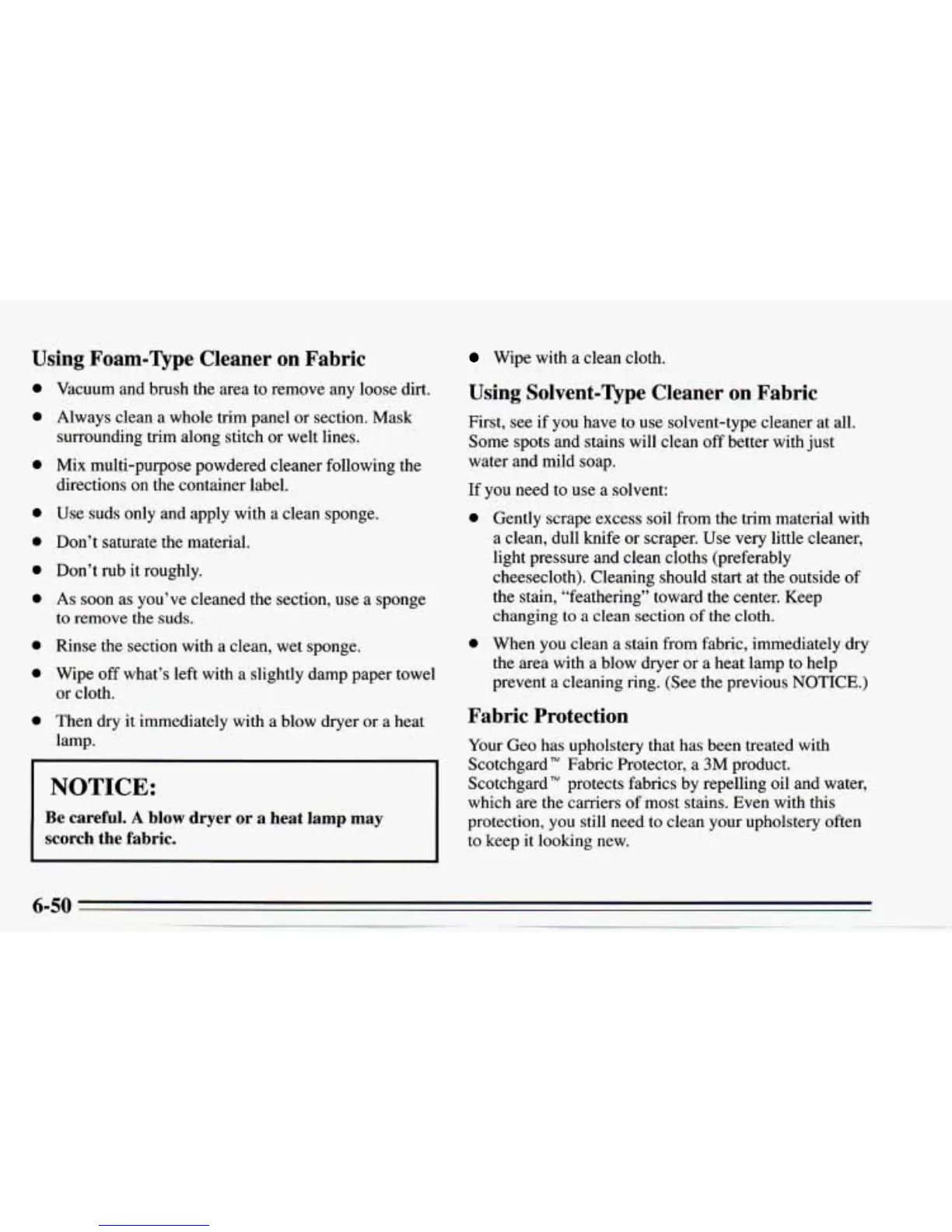Using
Foam-Qpe Cleaner on Fabric
0
0
0
0
0
0
Vacuum and brush the area to remove any loose dirt.
Always clean a whole trim panel or section. Mask
surrounding trim along stitch
or
welt lines.
Mix multi-purpose powdered cleaner following the
directions
on
the container label.
Use suds only and apply with a clean sponge.
Don’t saturate the material.
Don’t rub it roughly.
As
soon as you’ve cleaned the section, use a sponge
to
remove
the suds.
Rinse the section with a clean, wet sponge.
’wipe
off
what’s left with a slightly damp paper towel
or cloth.
Then dry it immediately with a blow dryer or a heat
lamp.
I
NOTICE:
Be careful.
A
blow dryer or a heat lamp may
scorch the fabric.
Wipe with
a
clean cloth.
Using Solvent-Qpe Cleaner on Fabric
First,
see
if you have to use solvent-type cleaner at all.
Some spots and stains will clean off better with just
water and mild soap.
If you need
to
use a solvent:
0
Gently scrape excess soil from the trim material with
a clean, dull knife or scraper. Use very little cleaner,
light pressure and clean cloths (preferably
cheesecloth). Cleaning should start at the outside of
the stain, “feathering” toward the center. Keep
changing
to
a
clean section
of
the
cloth.
0
When you clean a stain from fabric, immediately dry
the area with a blow dryer or a heat lamp
to
help
prevent a cleaning ring. (See the previous NOTICE.)
Fabric Protection
Your Geo has upholstery that has been treated with
Scotchgard
TM
Fabric Protector, a
3M
product.
Scotchgard’“ protects fabrics by repelling oil and water,
which are the carriers
of
most stains. Even with this
protection,
you
still need to clean your upholstery often
to
keep it looking new.
